Rating of the best strawberry varieties for Moscow and Moscow region for 2022
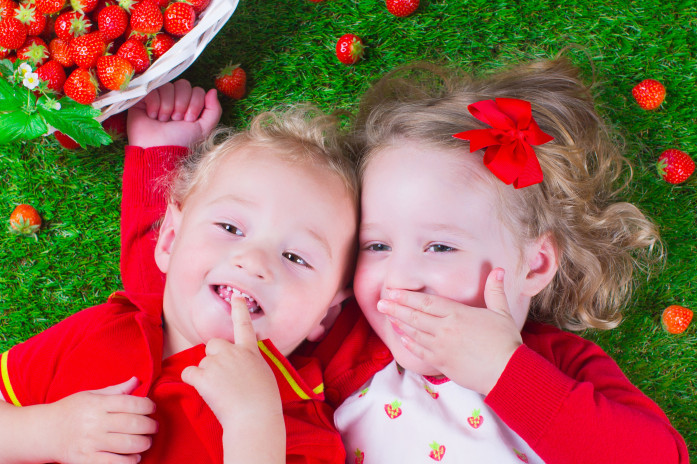
Strawberries are one of the earliest berries and the many varieties and flavors available on the market are impressive.
In the article we will talk about the best varieties of strawberries for Moscow and the Moscow region.
Content [Hide]
What seedlings to buy?

Strawberries are one of the most popular crops grown in gardens and household plots in Moscow and the Moscow region. These plants propagate easily, are not demanding for cultivation, care.
Strawberry bushes should have a well developed, compact aerial part with a well developed apical bud and proper leaf appearance.
The exception is spring cuttings, which may be without young leaves. All instances must have a properly developed and intact root system.
Seedlings should be healthy, not withered, not dry, so they should be stored in a foil bag. It is important that plants are not susceptible to diseases and pests.
Selected plants should have high morphological characteristics characteristic of the selected variety.
Strawberries in the garden are best grown in a sunny place, on soil rich in humus, but light, even sandy, well-drained, slightly acidic (pH 5.5-6). The berry does not like heavy and too wet soil.
planting season
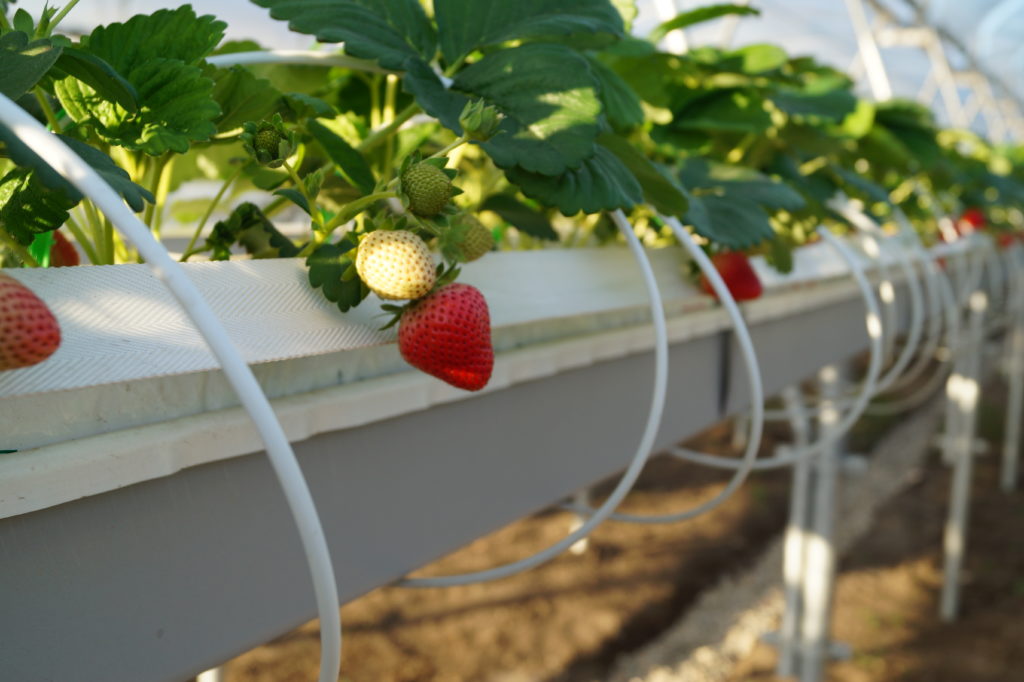
It is best to start planting in August-September, as they will bring the best harvests next year. If you plant seedlings in the spring (April-May), then the yield level in the first year will be much lower. According to summer residents, the best harvest occurs in the second or third year, so you can grow strawberries in one place for three to four years. Then you should change the beds with strawberries in a new place.
Before planting strawberries, the soil should be loosened, and if it is sandy, fertilize it by burying it with seasoned manure or compost (4-5 kg / m 2).
Weeds must be removed, especially the roots and grass of wheatgrass. It is best to grow strawberries in flower beds at a height of 15-20 cm above the ground so that water does not accumulate. It is better to plant plants in rows at a distance of 40 cm from each other and in rows every 20-30 cm, depending on the growth strength of this variety.
Attention! Before planting plants, it is important to make sure that they are not infected with diseases and pests, that their roots are not too dry.
If the roots seem too dry, it is recommended to place them in water for an hour or two before the procedure.
It is not recommended to plant on the slopes of home gardens, as the plants may suffer during heavy rains due to runoff.
How to choose and what you need to know
Choosing strawberry seedlings is not such an easy task as it might seem. There are many important factors to consider when choosing.
Differences usually lie in taste or ripening time, strawberry varieties differ from each other in the size of the fruit and even the abundance of the crop.
Quality seedlings are, first of all, those that have passed the appropriate stages of cultivation.
Material purchased from a certified store (nursery) gives confidence that they are of the highest quality and, more importantly, healthy.
It is important to personally inspect seedlings before buying, so you can be sure of their quality and assess their condition.
Features of care
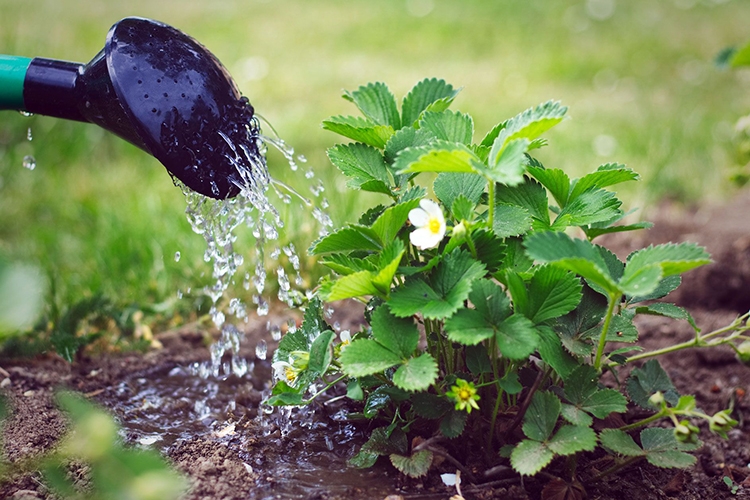
The berry has a shallow root system, which can be easily damaged when loosened. To avoid weed control, to brightly color the fruits and reduce the risk of infection, the beds should be covered with interlining or straw.
Antennae must be removed at least twice during the growing season - the first time after harvesting, the second - in early September. It is important to remove them in a timely manner, because, like weeds, they draw water, light and useful nutrients.
- Top dressing strawberries
Strawberries grow well in almost any soil, but the best yield will be achieved when the soil is fertile and well-drained with a high humus content and a slightly acidic pH.
Of course, every summer resident wants to enjoy juicy, fragrant fruits, but here you can’t do without top dressing and fertilizers.If the site prepared for planting is not fed with organic fertilizers, then mineral fertilizers (for example, Azofoska, Florovit) can be used. One part of the fertilizer, and this is approximately 40-60 g / m 2, add in the first year, and 20-40 g / m 2 in the next period.
- Frost protection
Strawberries are sensitive to frost, although some varieties are more resistant. Therefore, it is important to protect it from winter frosts, which often happens in Moscow and the Moscow region - for this, the plant must be covered with white agrofiber or ordinary straw.
- Weeding
Weeds significantly slow down the growth of strawberries, competing with them for water, oxygen and nutrients, as well as shading the crop. They must be removed before planting. In a prepared bed, weeds can be removed mechanically or with herbicides.
Weeding should be carried out no deeper than 5 cm. The use of herbicides is less laborious and does not require such frequent treatments. In addition, plants are not damaged. The effectiveness of herbicides depends on the type and stage of development of weeds, the type and dose of the drug, the weather and the accuracy of processing.
There are soil, foliar systemic and contact herbicides that can be selective or non-selective. Soil herbicides attack monocots and dicots, systematically penetrate conductive tufts and cause the death of the entire plant, while contact herbicides destroy only the tissue with which they come into contact. It is recommended to use only selective agents that control only individual weeds or groups of weeds without damaging the strawberries. Non-selective can only be used before the plantation is established. Herbicides are applied in calm weather, preferably in the evening.They should be rotated and the same preparation should not be used for several years, as this can lead to the growth and accumulation of resistant weeds.
- Irrigation and watering
Irrigation increases crop size and quality. The greatest need for water occurs immediately after planting, from flowering to harvest, especially during the period of fruit growth and ripening. Irrigation is important in late summer and early autumn, when there is less water in the soil, short-term droughts are possible and flower buds are formed for the next year. Strawberries grow best in regions where the average annual rainfall is 600-750 mm (early varieties - about 680 mm, late varieties - about 725 mm), while the Moscow region has an average rainfall of 550 mm.
Important!!! Water is one of the most important factors determining yield.
- Drip irrigation
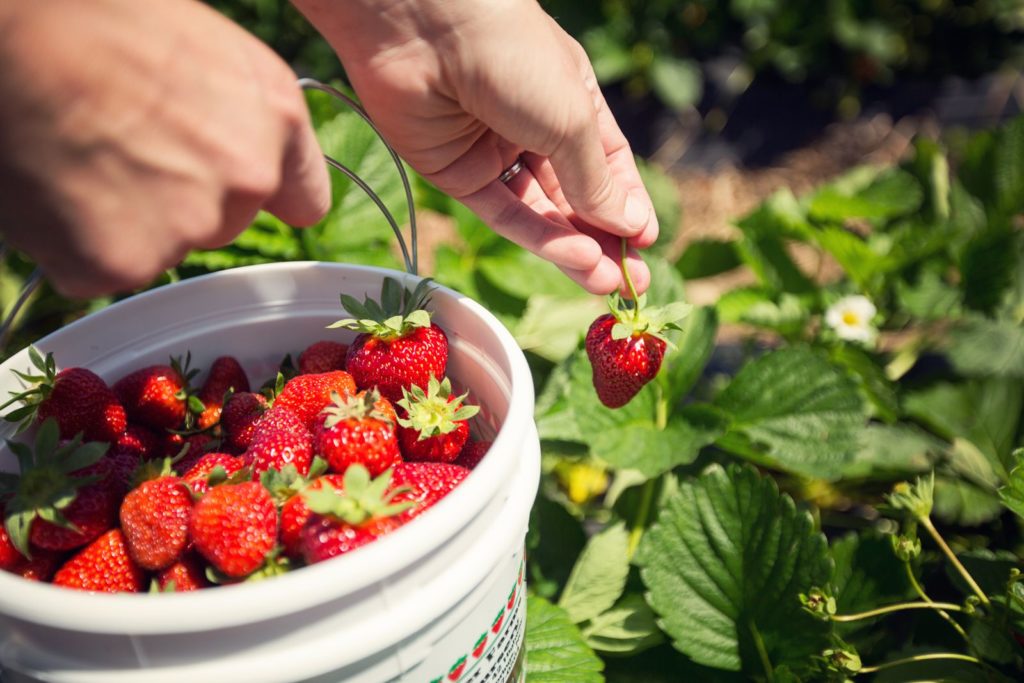
The method uses drip lines arranged in rows. The suggested spacing between drippers is 20-40 cm. Drip irrigation performs better water management than sprinkler irrigation, but higher maintenance costs should be taken into account - emitters (drippers) often clog, especially if we use untreated water. Therefore, it should be properly filtered.
- Destruction of shoots
Each season, the shoots should be removed twice (this procedure is not carried out with carpet growing of strawberries), in early or mid-July or early September.
Young plants grow on shoots that begin to compete with mother plants, which significantly reduces their yield, weaker phytosanitary conditions are observed.
- leaf shearing
Often this phytosanitary treatment is carried out in late July or early August.Leaves can be cut within 2 weeks of harvest, resulting in higher yields the following year. This treatment should not be carried out too late, as damaged plants may not recover until winter.
Many new strawberry varieties also have a pleasant taste and the advantage of not getting sick. Mostly there are varieties that bear fruit one or more times per season. For household plots, a mixture of both species or a combination of early and late varieties can be recommended.
The best early and mid-early varieties
Darselect
votes 0
An early variety of plants, red-orange, strong and very tasty fruits, a medium-sized crop, slightly susceptible to gray rot. Proper care and watering can give a good yield, the weight of the berries is about 25 to 30 grams.
Berries can be eaten already at the end of spring, depending on the sun and air temperatures.

Price - 420 rubles.
- aroma;
- taste;
- juiciness;
- good yield;
- the aroma of wild strawberries prevails;
- moderate acid is present;
- frost resistance;
- resistance to diseases, rot.
- no.
Elsanta
votes 0
A popular variety from early to medium early, the fruits are large, from orange-red to red, very firm, juicy and fragrant.
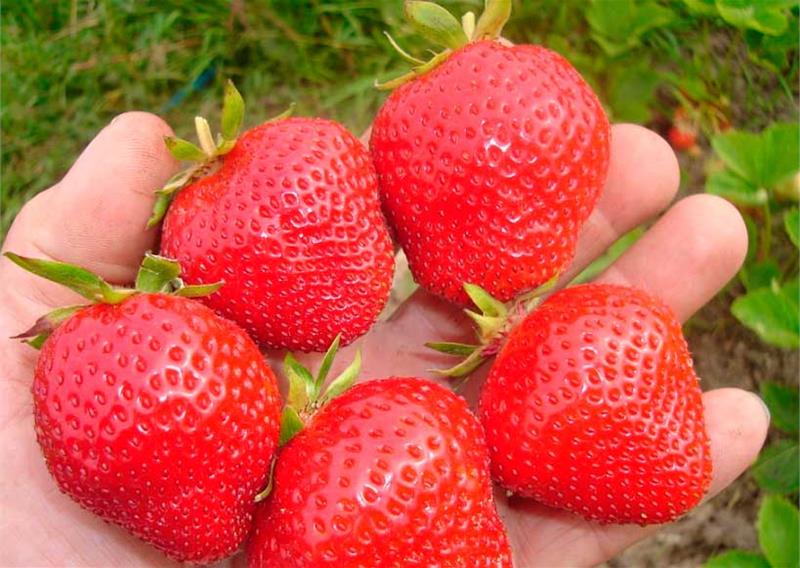
Price - 460 rubles.
- taste, moderately sweet with a pleasant sourness;
- the approximate weight of one berry is about 45 grams;
- high yield;
- aromatic pulp with a raspberry flavor;
- tolerates transportation well;
- stored for a long time;
- juiciness and aroma;
- moderately susceptible to diseases of the root system;
- unpretentiousness in care;
- the variety is resistant to diseases, the appearance of gray rot;
- during autumn frosts and winter colds, it needs good shelter.
Sudarushka
votes 0
Large juicy, very fragrant fruits, from red to red-scarlet in color, resistant to diseases, a fairly popular strawberry variety among summer residents of the Moscow region. The difference between the berries in their shape and size - large, egg-shaped will appeal to many lovers of fragrant and juicy strawberries.
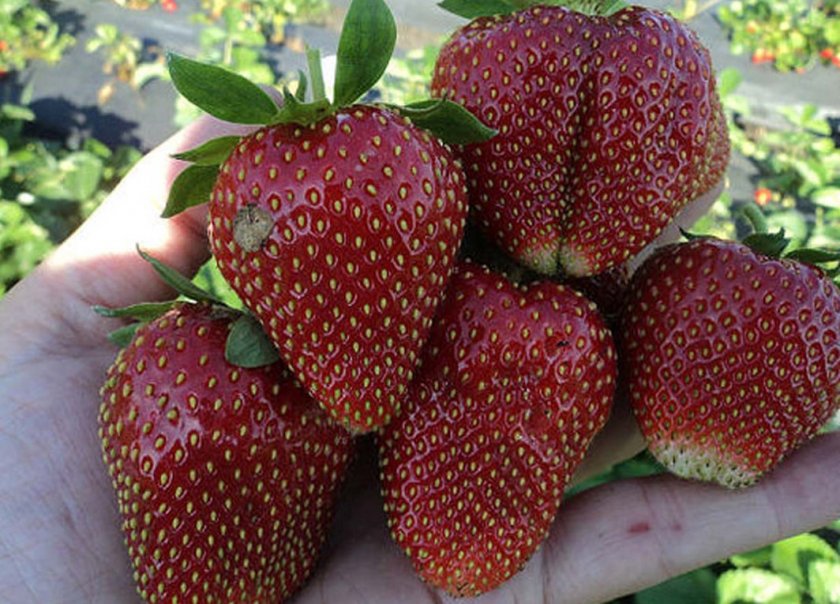
Price - 150 rubles.
- aroma and juiciness;
- excellent taste qualities;
- bright color and shine;
- size, density;
- great for freezing or drying;
- cold tolerance;
- disease resistance;
- average yield.
- needs feeding and fertilizer.
Alba
votes 0
One of the earliest varieties, perfect for Moscow and the Moscow region.
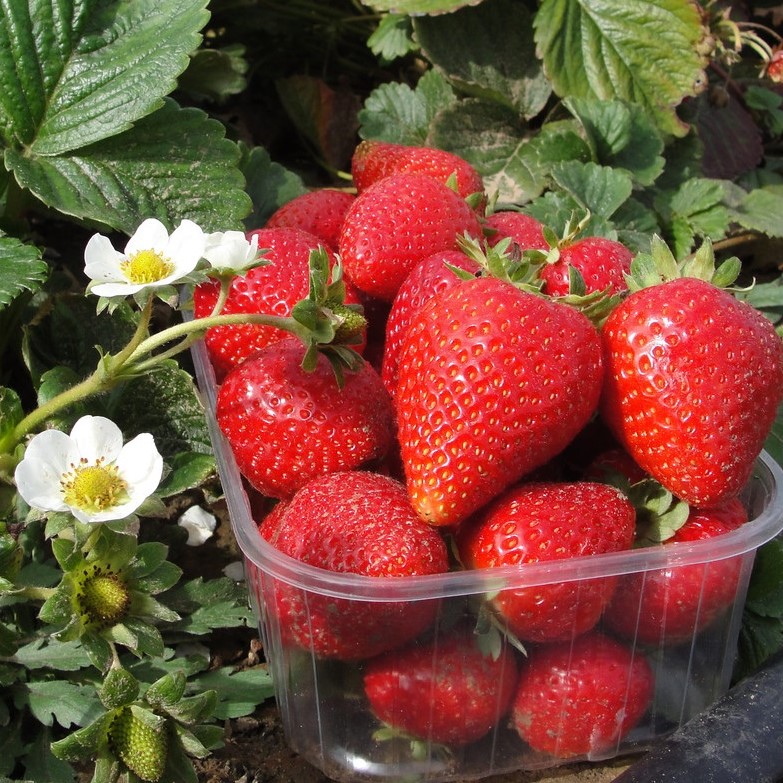
Price - 460 rubles.
- excellent taste;
- aroma, berry density;
- frost resistance;
- the variety is little susceptible to diseases of the root system, to the appearance of gray rot;
- large fruits;
- transport resistance.
- no.
Honey remontant
votes 0
An early variety of medium growth, differs in the level of productivity.
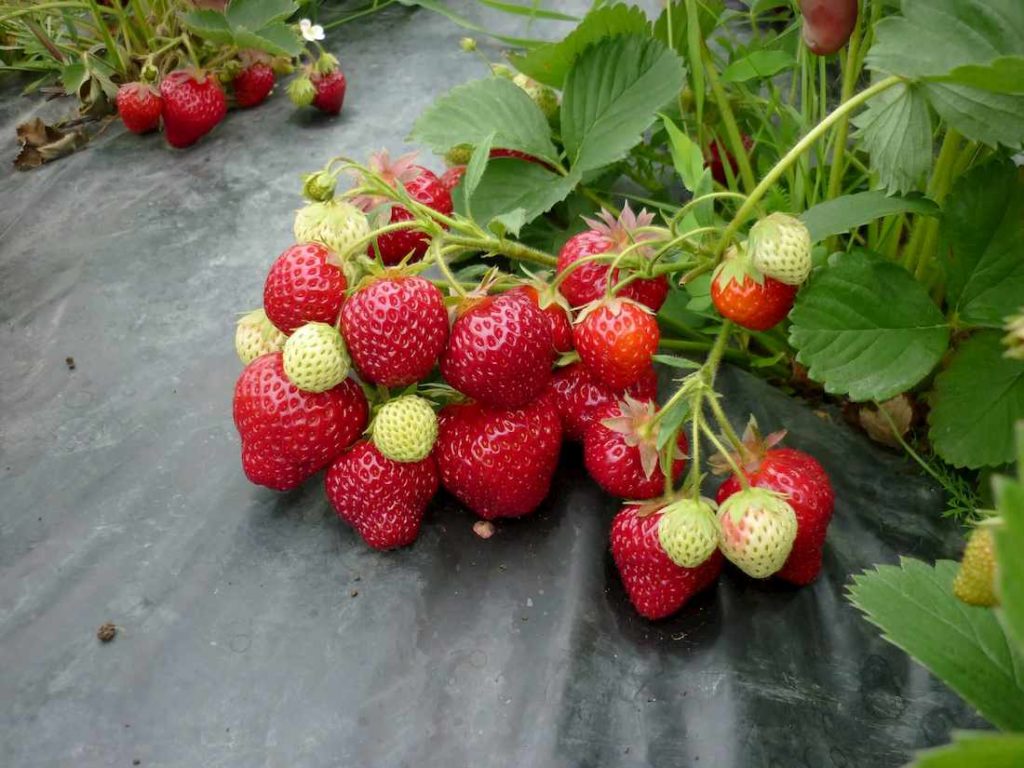
Price - 250 rubles.
- productivity;
- berries are medium and large enough;
- bright red, shiny;
- high resistance to gray rot;
- low susceptibility to powdery mildew and the appearance of white spots on the leaves.
- no.
Ducat
votes 0
A mid-early plant variety that, with proper care, watering and irrigation, can produce large, juicy berries.

Price - 150 rubles.
- high yield;
- disease resistance;
- berries are large and beautiful;
- juicy pulp;
- resistance to transportation;
- suitable for freezing and preservation;
- tolerates temperature fluctuations.
- needs feeding.
Elkat
votes 0
Mid-early variety, quite fertile with high disease resistance.
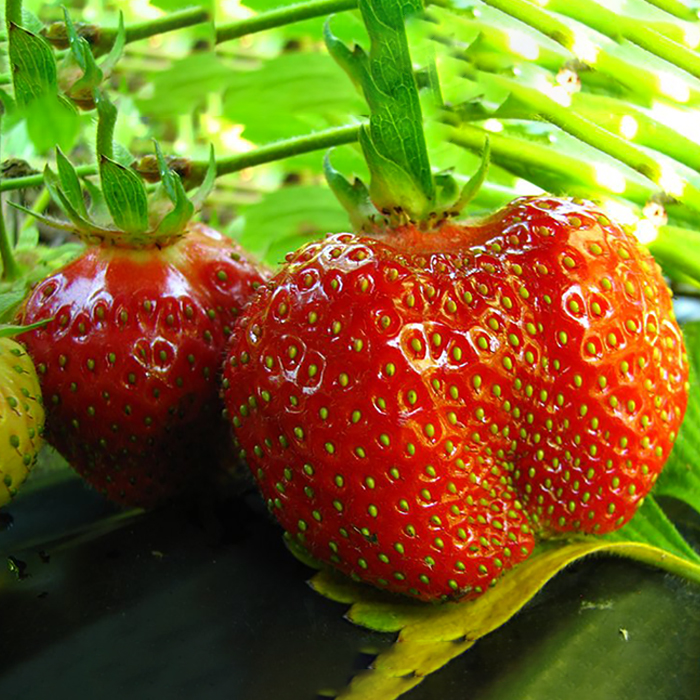
Price - 150 rubles.
- juicy pulp;
- juicy and rich color of berries;
- aroma;
- pleasant sourness;
- resistance to gray rot, powdery mildew, stains;
- berries are dense, glossy;
- normally tolerates transportation;
- well kept;
- the plant gives many shoots;
- reproduces well;
- suitable for freezing, drying.
- no.
Late varieties of strawberries
Florence
votes 0
A very late variety that is resistant to diseases of the root system, as well as damage to the leaves of the plant.

Price - 437 rubles.
- taste, aroma;
- moderate acid;
- resistance to gray rot;
- large size of berries;
- fertility;
- dark red fruits;
- moderately cold hardy.
- no.
Elvira
votes 0
Late variety with moderately strong growth, rich foliage, good yield.
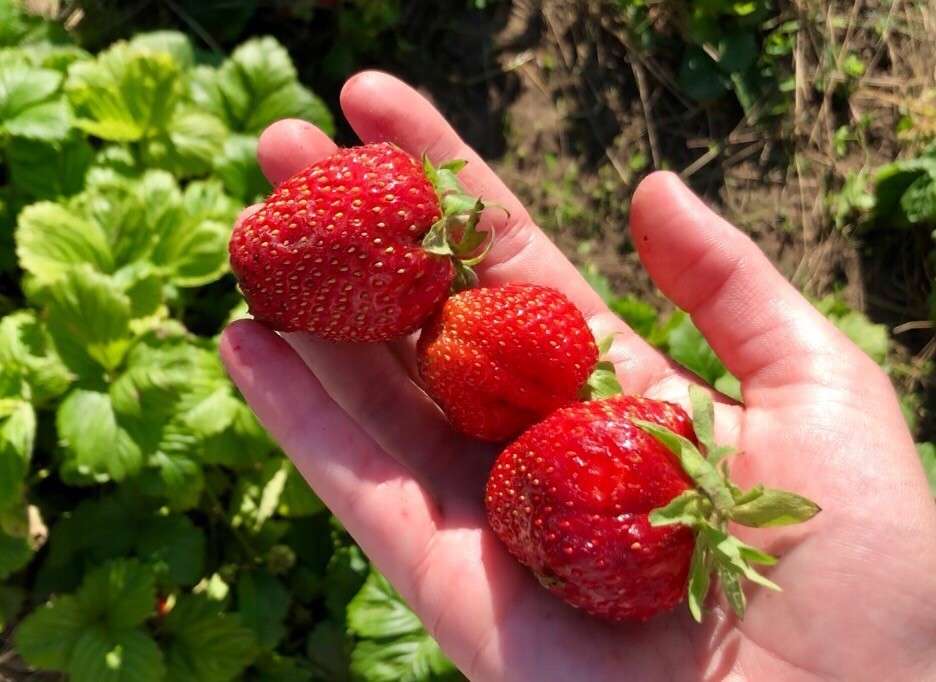
Price -420 rubles.
- bright, rich taste, aroma;
- bountiful harvest;
- reproduces well;
- normally tolerates transportation;
- well kept;
- the plant gives many shoots;
- the plant is less susceptible to disease;
- quite frost-resistant variety.
- no.
Alba
votes 0
A very late maturing variety at the end of June that is resistant to root diseases and powdery mildew.
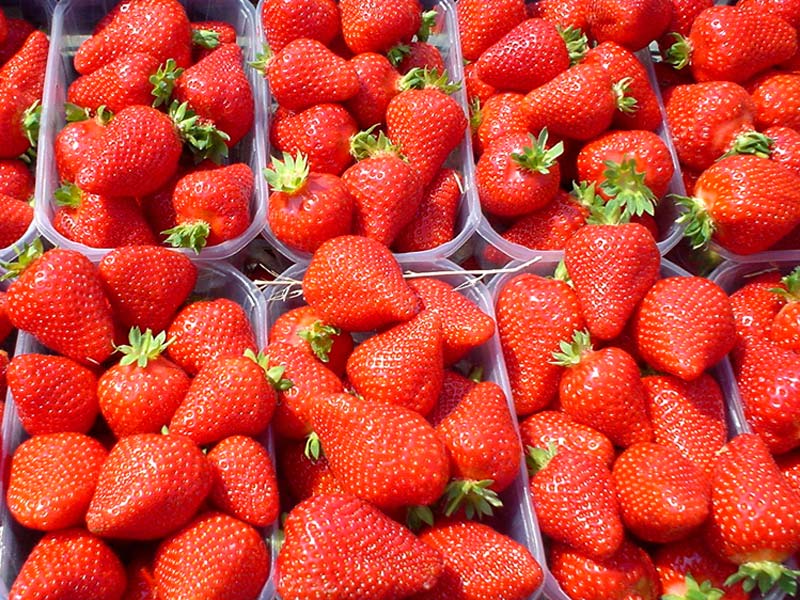
Price - 460 rubles.
- taste qualities;
- bright color, natural shine;
- juicy pulp;
- tall bushes;
- frost resistance;
- bears fruit for a long time;
- average yield.
- no.
Pandora
votes 0
Very late dessert variety, for preservation and freezing. The fruits are large, spherical, dark red, very juicy.
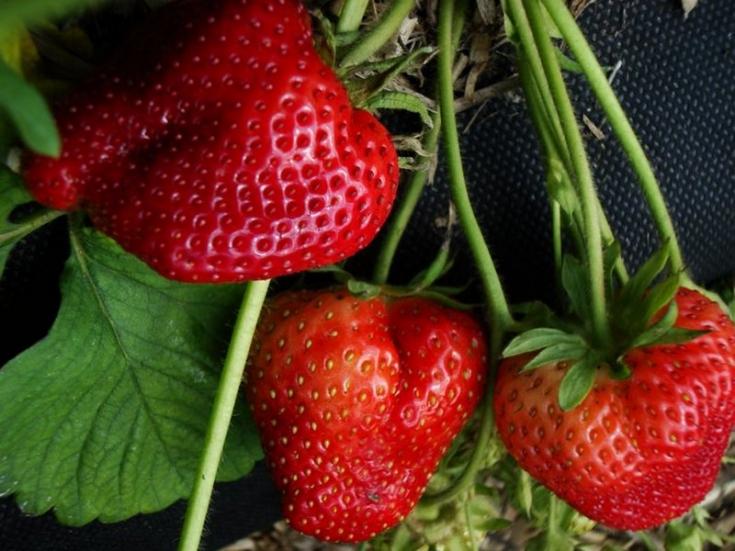
Price - 150 rubles.
- taste, aroma;
- resistance to root diseases and frost, to gray rot;
- abundant yield;
- moderate acid is present;
- frost resistance;
- bright color, natural shine;
- juicy pulp.
- no.
Pegasus
votes 0
Dessert variety of late fruiting. The berries are large and shiny. Resistant to gray mold, root diseases and frost, but not very resistant to powdery mildew.
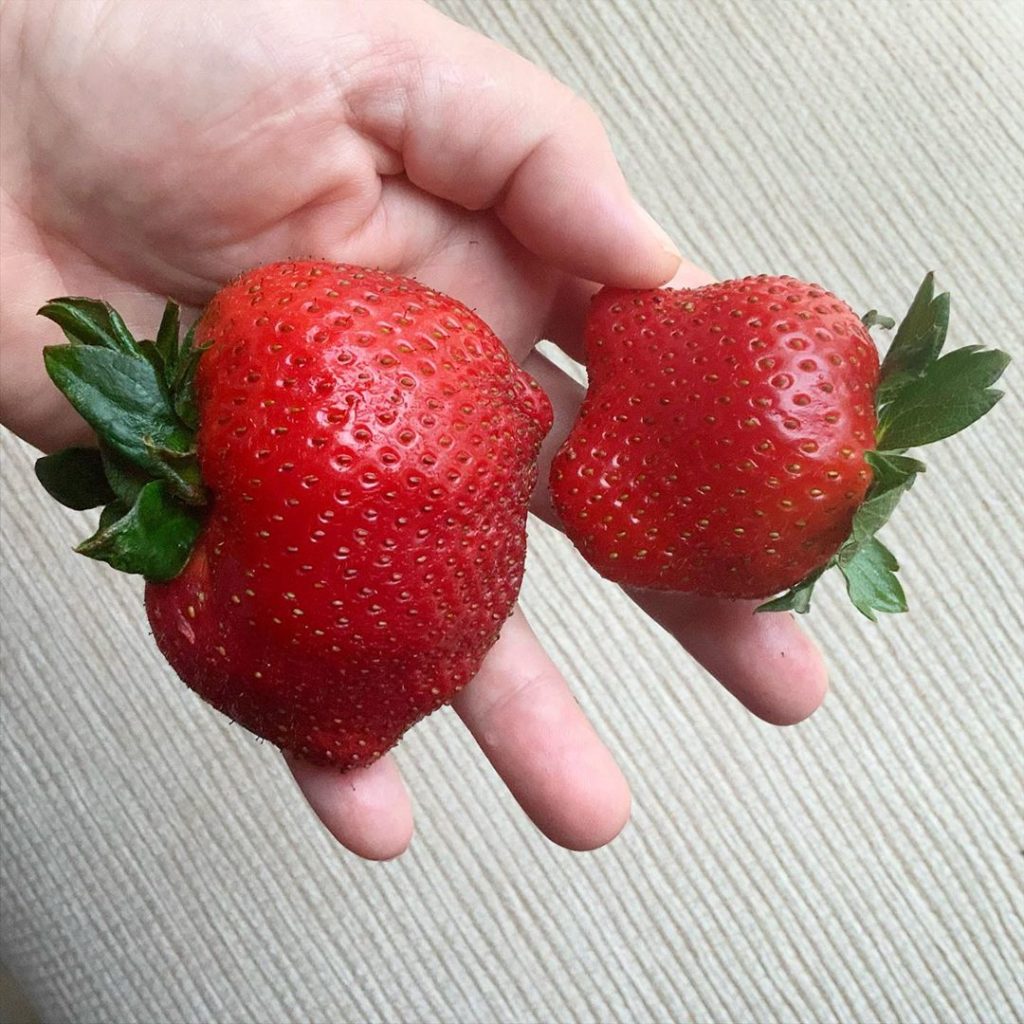
Price - 250 rubles.
- balanced sweet and sour taste;
- bright color;
- shine;
- well kept;
- the variety is little susceptible to diseases of the root system, to the appearance of gray rot;
- large fruits;
- transport resistance.
- no.
Zenga
votes 0
A mid-late variety known for over 50 years and grown all over the world. The fruit is large, dark red, shiny, very fragrant and tasty, large, but shrinks over time; prone to gray mold.
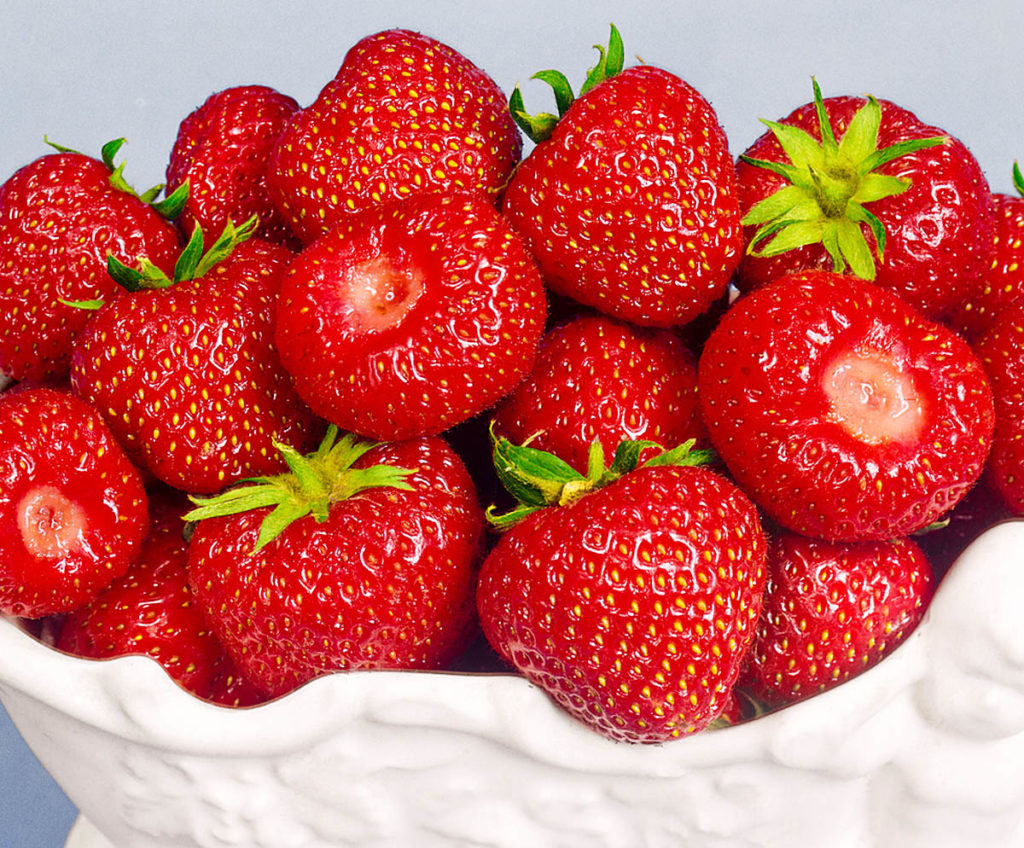
Price - 239 rubles.
- the plant is resistant to diseases of the root system and powdery mildew;
- frost resistance;
- high yield;
- dessert variety.
- strong and fast growing shrubs.
- does not tolerate transportation well.
Selva
votes 0
Strawberries of multiple fruiting (first harvest in June, then in August until frost).
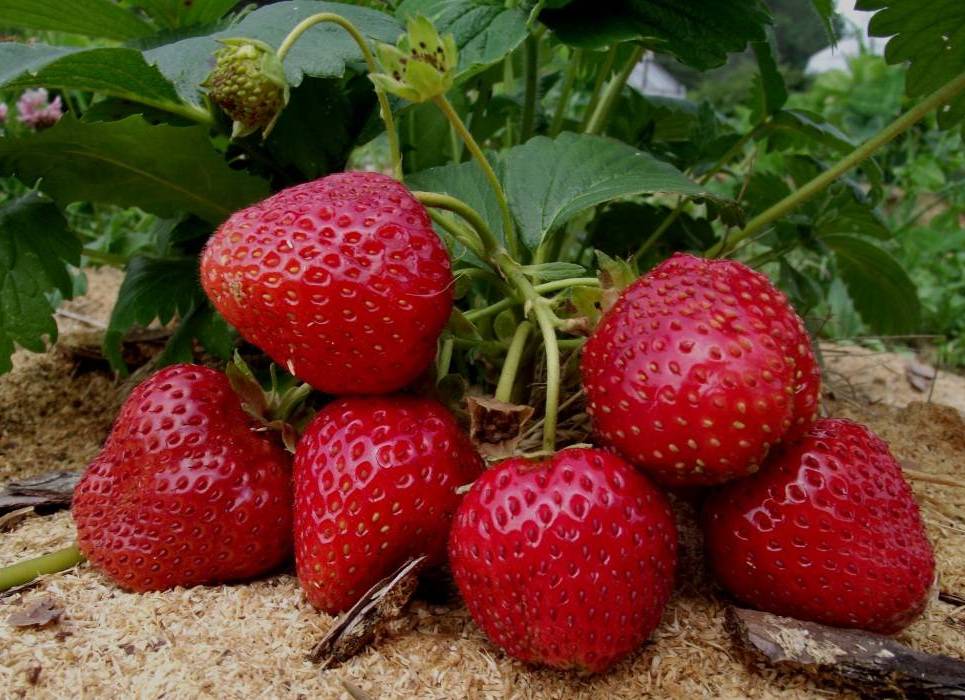
Price - 479 rubles.
- the variety is moderately resistant to gray rot and is slightly susceptible to diseases of the root system;
- berries are large;
- bright red color with a strong luster;
- growth is moderate;
- well transfers long transportation.
- the variety is moderately sensitive to frost - it can freeze slightly.
Conclusion

The pleasant and sweet taste of juicy strawberries reminds us of the delights of summer, this berry is often associated with childhood.
The tips in the article will help you choose varieties for Moscow and the Moscow region, taking into account the characteristics of the climate, and grow this fruit on your site, enjoy its taste and aroma.
new entries
Categories
Useful
Popular Articles
-

Top ranking of the best and cheapest scooters up to 50cc in 2022
Views: 131651 -

Rating of the best soundproofing materials for an apartment in 2022
Views: 127691 -

Rating of cheap analogues of expensive medicines for flu and colds for 2022
Views: 124519 -

The best men's sneakers in 2022
Views: 124033 -

The Best Complex Vitamins in 2022
Views: 121940 -

Top ranking of the best smartwatches 2022 - price-quality ratio
Views: 114980 -

The best paint for gray hair - top rating 2022
Views: 113395 -

Ranking of the best wood paints for interior work in 2022
Views: 110319 -

Rating of the best spinning reels in 2022
Views: 105329 -

Ranking of the best sex dolls for men for 2022
Views: 104366 -

Ranking of the best action cameras from China in 2022
Views: 102216 -

The most effective calcium preparations for adults and children in 2022
Views: 102011









